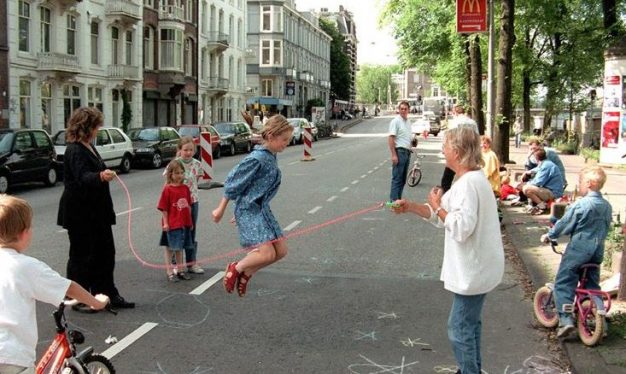
Including children in urban planning lead to happy communities
There is a growing body of research that shows that participation in decision -making helps children and young people to gain new skills and knowledge and build their confidence in other processes, including democracy. Yet, most land use planning practices exclude children from the decisions that affect their lives.
Research findings reveal that young people represent an important component of the population who have a right to take an active part in decisions that affect the health and well- being of their community. Planners have a responsibility to provide young people with opportunities to exercise this right so that they can take on their responsibilities as interested and well-informed citizens.
Children’s views matter
“Urban planning involving children and adolescents is booming,” proclaimed Ulrike Ohl, researcher at the University of Heidelberg, Germany.
“In fact, many projects like these can be found all over Germany, particularly in the most important city development programs like the federal state program “Socially Integrative City” (“Districts with special developmental needs – the Socially Integrative City” program – or short “Socially Integrative City” – is a program adopted in 1999 by the federal and federal state government to support urban development)”, added Ohl.
A participation project is one in which children are directly involved in decision making relating to a project on themes relevant to their lives, such as a play space, public transit, school issues, city festivals. In brief, a participation project is about planning things with children, for children.
Ohl said: “Children should be given the possibility to express their views, formulate their thoughts and make decisions that are relevant for their lives. Their views should be given weight in the decision-making process. Young people’s perceptions concerning urban space creates a basis for target group orientated urban planning.”
“The benefits are endless. Making children visible in social life and policy gives children opportunities to learn democratic rules and involving them gives them the feeling of being treated and respected as equal citizens,” added Ohl.
Barriers to young people’s contribution
Although there is an increasing number of people who now advocate the inclusion of children in development decision-making, yet children’s participation in planning has been neglected in practice. This may be due to a number of obstacles.
“In the beginning, you may be confronted with negative or even hostile remarks, with barriers and obstacles on different levels. People may not understand why the participation of children is important, why they should support your project, or what the outcomes will be,” explained Ohl.
Problems arise when children’s involvement is ambiguous or even manipulative. Ohl raised the issue of “pseudo-participation” or as symbolical politics. In this scenario, there is a strong tendency on the part of adults to underestimate the competence of children while at the same time using them in events to influence some cause.
“There are photos of the children in the newspaper through which politicians express their child-friendliness. The effect is patronizing,” said Ohl.
“Generally speaking, particularly in major cities and complex ‘urban’ districts, urban planning process is usually dominated by influential stakeholders and complex requirements and therefore leaves a very little space for children’s participation. What makes the problem worse that planning experts lack the experience how to educate children about sustainable urban planning and participation in urban planning.” concluded Ohl.




